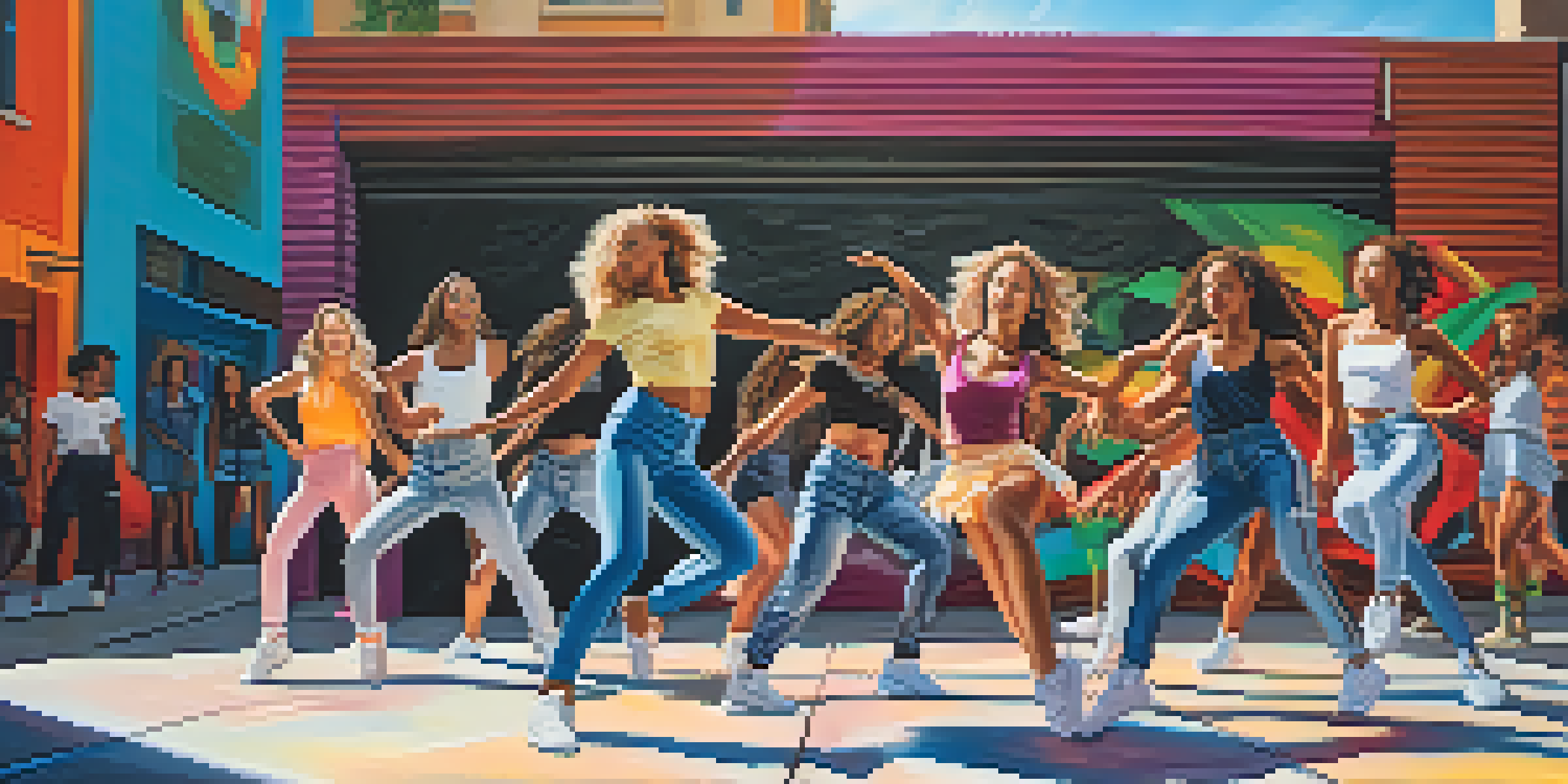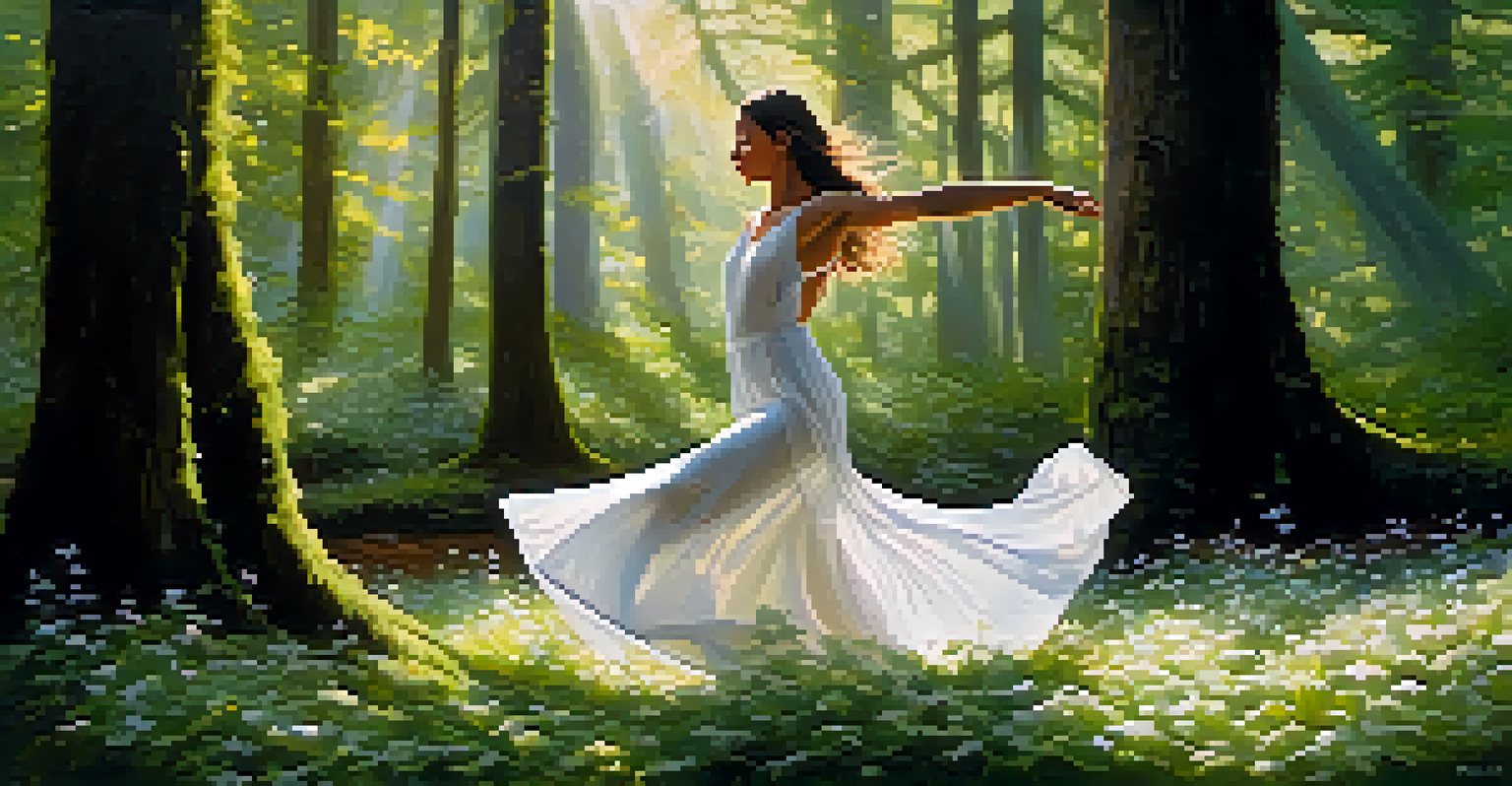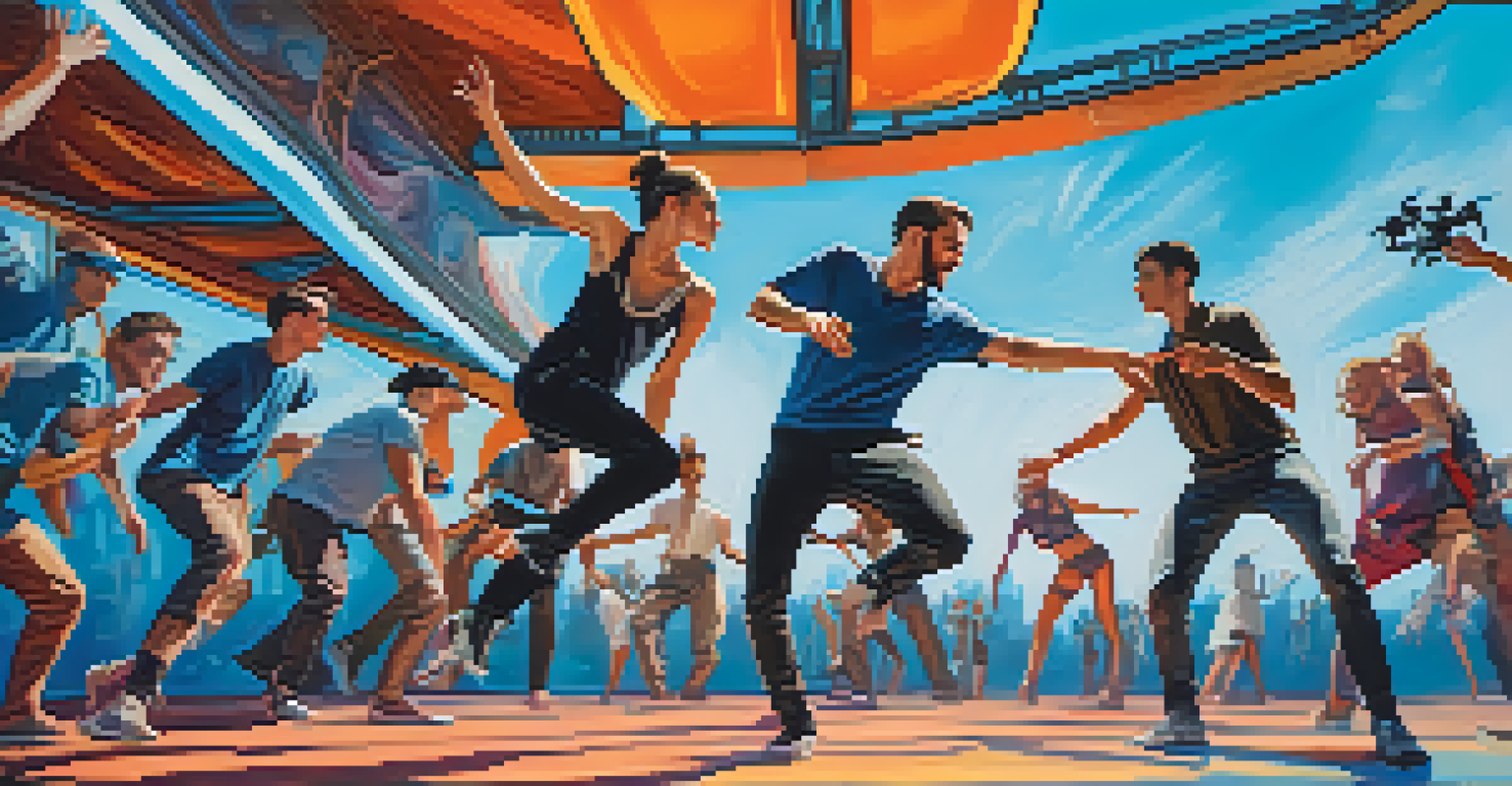Creating Dance Films: The Influence of Digital Technology

The Evolution of Dance Films in the Digital Age
Dance films have come a long way from their early days, evolving significantly with the advent of digital technology. In the past, filmmakers were limited by expensive equipment and complex editing processes, which often hindered creativity. Today, thanks to digital tools, anyone with a smartphone can capture stunning choreography and share it with the world. This democratization of dance filmmaking has led to an explosion of creativity and innovation.
Dance is the hidden language of the soul.
You might think of the iconic dance sequences in movies like 'Singin' in the Rain,' which relied heavily on traditional filmmaking techniques. Fast forward to today, and you’ll find dancers using apps to choreograph, edit, and distribute their films, often in real-time. This shift not only makes dance more accessible but also fosters a new generation of filmmakers who are merging dance with various digital mediums.
As technology continues to advance, the possibilities for dance films seem endless. For instance, filmmakers can now use drones for breathtaking aerial shots or incorporate virtual reality to immerse viewers in the performance. This transformation allows artists to explore new dimensions of storytelling, making dance films more engaging and impactful than ever before.
The Role of Social Media in Dance Film Distribution
Social media platforms like Instagram, TikTok, and YouTube have revolutionized how dance films are shared and consumed. These platforms allow dancers and filmmakers to reach a global audience instantly, breaking geographical barriers that once confined them. For example, a dancer in New York can share their latest choreography with viewers in Tokyo, creating a vibrant international community.

Consider the viral dance challenges that take social media by storm, often leading to collaborations and new dance trends. These platforms serve as a launchpad for emerging talent, enabling them to gain recognition quickly. Moreover, the interactivity of social media allows viewers to engage directly with creators, fostering a deeper connection between the audience and the art.
Digital Tech Transforms Dance Films
The evolution of digital technology has democratized dance filmmaking, allowing anyone with a smartphone to create and share innovative choreography.
This immediate feedback loop can be both exciting and daunting for filmmakers. While the potential for widespread recognition is high, the pressure to produce content regularly can be overwhelming. However, those who harness this opportunity often find that their work resonates more deeply with audiences, driving innovation and pushing the boundaries of dance film.
Technological Innovations Enhancing Dance Filmmaking
With advancements in technology, dance filmmakers now have access to tools that can enhance their storytelling. For instance, motion capture technology allows filmmakers to create stunning visual effects that complement the choreography. This technology captures a dancer's movements and translates them into digital animations, creating a surreal blend of reality and fantasy.
The dance is a poem of which each movement is a word.
In addition to motion capture, filmmakers are also exploring the use of augmented reality (AR) and virtual reality (VR) to create immersive experiences. Imagine a viewer donning a VR headset and stepping into a dance performance, feeling as if they are part of the choreography. This innovative approach not only captivates audiences but also opens new avenues for artistic expression.
These technological innovations invite dancers to think outside the box, experimenting with how movement can be perceived through different lenses. As filmmakers continue to embrace these advancements, the line between dance and technology blurs, leading to groundbreaking projects that push the limits of creativity.
Collaborations Between Dancers and Technologists
The intersection of dance and technology has paved the way for exciting collaborations between dancers and technologists. Artists are increasingly seeking out tech experts to help bring their visions to life, combining artistic intuition with technical prowess. This partnership often results in unique projects that might not have been possible without the blending of these two fields.
For instance, some choreographers are working with programmers to create interactive installations where viewers can influence the dance through their movements. This kind of collaboration offers a fresh perspective on how dance can engage audiences, making them active participants in the experience. The result is a rich tapestry of creativity that showcases the strengths of both disciplines.
Social Media Sparks Global Reach
Platforms like Instagram and TikTok enable dancers to connect with a worldwide audience, creating a vibrant community and fostering new trends.
These partnerships also foster an environment of learning and growth, where each party can share their expertise. Dancers gain a deeper understanding of how technology can enhance their art, while technologists learn to appreciate the nuances of movement. Together, they are creating a new lexicon of dance filmmaking that is as innovative as it is inspiring.
Challenges Facing Dance Filmmakers Today
Despite the many opportunities digital technology presents, dance filmmakers face several challenges in this ever-evolving landscape. One significant hurdle is the sheer volume of content being created and shared online. With so many voices vying for attention, it can be tough for individual filmmakers to stand out and find their audience.
Additionally, the rapid pace of technological change means that filmmakers must continually adapt and learn new skills. Keeping up with the latest software and hardware can be overwhelming, especially for those who prioritize the artistic side of filmmaking. This constant need for adaptation can divert focus away from the creative process, leading to frustration.
Moreover, financial constraints can hinder the ability to invest in high-quality equipment and production values. While many tools are accessible, achieving a polished final product often requires resources that not all filmmakers possess. Balancing creativity with financial realities is a challenge that many dance filmmakers must navigate.
The Impact of Dance Films on Cultural Narratives
Dance films have the power to shape and reflect cultural narratives in profound ways. Through movement and storytelling, filmmakers can explore themes of identity, community, and social issues. For example, a dance film may highlight the experiences of marginalized groups, giving them a voice and a platform to share their stories.
This ability to convey complex emotions through dance allows filmmakers to connect with audiences on a deeper level. A beautifully crafted dance sequence can evoke feelings of joy, sorrow, or nostalgia, transcending language barriers. In this way, dance serves as a universal language, allowing filmmakers to communicate their messages effectively.
Collaboration Enhances Creativity
Partnerships between dancers and technologists lead to groundbreaking projects that merge artistic expression with cutting-edge technology.
As more voices enter the dance film space, diverse perspectives emerge, enriching the cultural tapestry. Filmmakers are increasingly telling stories that challenge stereotypes and broaden the understanding of different cultures. This evolution not only benefits the filmmakers but also cultivates a more inclusive and empathetic audience.
Looking Ahead: The Future of Dance Films
As we look to the future, the potential for dance films seems boundless. With technology continuing to advance at a rapid pace, we can expect to see even more innovative approaches to storytelling. Filmmakers are likely to experiment with artificial intelligence, machine learning, and other emerging technologies, creating experiences that we can only begin to imagine.
Moreover, as the global dance community continues to grow, so too will the diversity of dance films. Filmmakers are likely to explore new genres and styles, blending traditional dance with contemporary techniques. This fusion of influences will enrich the landscape of dance films, making them more relevant and reflective of our world.

Ultimately, the future of dance films lies in the hands of both creators and audiences. As filmmakers push the boundaries of their craft, audiences will continue to seek out authentic and transformative experiences. Together, they will shape the next chapter of dance filmmaking, making it an exciting time for both artists and viewers alike.